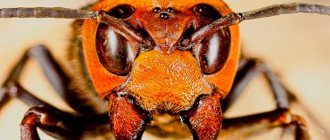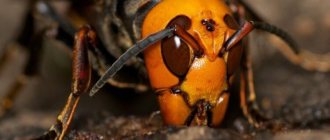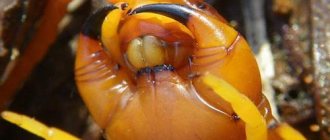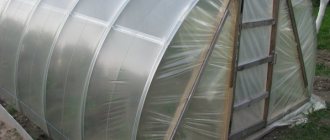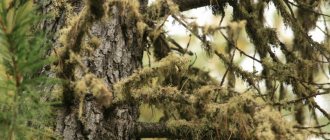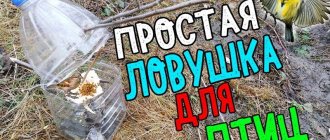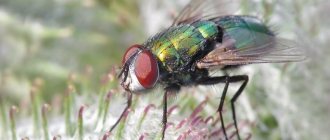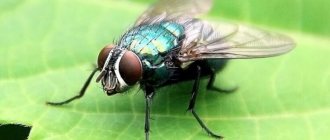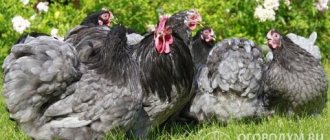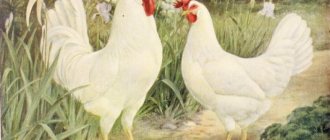What to do if bitten by a hornet
If you have been bitten by a hornet, you must immediately take the following measures:
- Take an antihistamine, for example, Suprastin, as quickly as possible; it will slow down the occurrence of an allergic reaction.
- You can try to suck out the poison released by the hornet from the wound, but you need to do this very quickly, since the skin at the site of the bite begins to tighten and if you missed 1-2 minutes after the bite, then there is no point in doing this.
- It is worth putting a cold compress on the bite site; it will slow down the spread of the poison and at the same time reduce swelling of the skin.
- Apply Fenistil gel to the bite area.
- If you have a fever after being bitten, do not bring it down unless it rises above 38 C.
- Do not drink alcohol under any circumstances.
- If you feel worse, do not hesitate to call an ambulance.
A giant among wasps - the Asian hornet
The largest wasp is Vespa mandarinia, also known as the Asian hornet. It should not be surprising that the title went to the hornet. This insect is a representative of the family of True wasps. Lives in the Middle Kingdom, Japan, Korea. Numerous populations occur in the Primorsky Krai in Russia.
Appearance
The largest wasp in the world reaches 5.9 cm in length, and the wingspan is 7.5 cm. If you sit such an individual on the palm of your hand, the wings will completely cover its surface. It is not for nothing that nature has awarded this species with its impressive size.
What does an insect look like:
- body color varies from rich yellow tones to moderate brown with characteristic black wide stripes and is determined by the subspecies;
- yellow head;
- cephalothorax in black tones;
- on both sides of the head there are huge teardrop-shaped eyes of almost black color;
- In the center of the forehead in the form of a triangle there are 3 additional simple eyes that allow you to distinguish between dark and light tones and help you navigate in space.
Lifestyle
Giant wasps live mainly in forests near bodies of water. The queen hornet is in charge of arranging the new nest, which is typical for all insects of this order. After waking up in the spring, she begins preparing a home for her future family. The female prepares building materials from chewed tree bark, abundantly moistened with saliva. She builds cells from a sticky substance in a very interesting way: she grabs the substrate with her front jaws, presses it tightly to her chest and, biting off a small piece, sticks it.
While the queen maintains her status as a “single mother,” she has to independently prepare food for the larvae. To do this, she is forced to hunt insects and deliver food to the cells. As soon as the working individuals emerge from the first eggs, the queen relinquishes all authority to arrange housing, prepare food, and is only concerned with the reproduction of offspring.
From morning to night, working hornets obtain food for the voracious larvae, whose diet must be enriched with protein foods. Therefore, giant wasps often raid apiaries and can completely destroy an entire family.
Killer wasps absorb honey, and the killed individuals are taken to the nest to feed the babies. It is worth noting that insects use their giant stings in extreme cases. They effortlessly cope with weak opponents using their developed jaws. It is difficult for beekeepers to resist the powerful force of wasp aggressors, so when they discover a hornet nest, they try to destroy it immediately.
Closer to autumn, population growth stops. The males die off after mating, and the fertilized queen looks for a new wintering place to start a new family next year.
How dangerous are giant wasps for humans?
Careless and ignorant tourists, having seen the largest wasp in the world, try to photograph it. The insect perceives this as aggression and attacks the person. There is no need to worry about the life of the wasp - in a split second it will remove its sting and go on about its business.
But the condition of the victim can be alarming, especially if there are a lot of bites. The only good news is that the wasp is a thrifty creature and uses the poison very sparingly. During one bite, she injects about 2 mg. The poisonous mixture contains many toxic components, as well as a potent poison - mandarotoxin. The sting of a huge wasp is painful and is comparable to piercing the skin with a hot nail.
The following symptoms may appear:
- the appearance of redness, extensive swelling;
- changes in blood pressure;
- cardiopalmus;
- headache;
- cramp, severe pain in the affected area.
First aid for a victim of an Asian hornet before the doctor arrives is to remove the sting if it is accidentally left, disinfect the affected area and apply a cold compress to relieve pain, burning and reduce swelling.
Mimicry
As already mentioned, syrphids are very similar in appearance to stinging insects - wasps, bees, bumblebees. The hoverflies seem to be camouflaged as them, and their striped black and yellow coloring helps them in this. But upon closer examination, you can notice the difference:
- syrphids have much shorter antennae (for example, a wasp has antennae up to 1 cm);
- they are smaller than wasps, bees, etc. (excluding especially large species);
- they have 1 pair of wings, while the stinging ones have 2.
But even with these minor differences, nothing prevents syrphids from feeling quite at ease and boldly in nature: their external imitation (mimicry, from the English word mimicry - disguise, imitation) of dangerous stinging insects is so believable that few birds risk attacking them, especially if you have already had a sad experience of contact with a wasp. But all this is despite the absolute harmlessness and even some defenselessness of the syrphids.
Nature has endowed these flies with such a coloring, thanks to which they may not be afraid of attacks from enemies. Hence several more popular names for hoverflies: bee-eater, wasp-fly, wasp fly, etc.
There is one unusual insect that appears in May. Everything about it is unusual: its appearance, as if stolen from a bumblebee, but with a long proboscis, and its flight style, with hovering in the air in one place, like a hummingbird, and even its name - Big Buzzer
, with three letters “F” in the name, in Latin Bombylius major. Flying from flower to flower and diligently collecting nectar, this shaggy miracle causes delight in everyone who manages to see it.
The body is short, slightly flattened, densely covered with hairs. The wings, the front of which are painted dark, are spread out to the sides, like a jet plane. The comparison with an airplane is all the more true since these flies (as well as hoverflies) are excellent flyers. The buzzer is capable of hovering in the air. It has a long, non-retractable proboscis, with which it can suck nectar directly on the fly, in the manner of hawk moths and hummingbirds. Such a proboscis, along with other features, creates a unique appearance, and once you see it, you are unlikely to confuse this fly with others.
Added on May 14, 2018:
Mite
Ticks are dangerous because they carry dangerous diseases - tick-borne encephalitis and Lyme disease. Fortunately, not every tick is a carrier of the virus; however, it is not worth the risk, but you need to take preventive measures and protection from the consequences in advance.
For some reason, many people think that ticks live on trees and fall from them in clusters onto peacefully walking passers-by. In fact, ticks mainly live in the grass, which is where they attack their victims.
Ticks are most dangerous in May-June. With the onset of summer, the danger of transmitting viruses decreases slightly, and in September it practically disappears.
Ticks guard their victims along paths and paths. The favorite places of this insect are branches of bushes, tall grass, and small trees.
As a rule, ticks first land on the victim's legs and begin to move upward in search of a more suitable place to bite. The tick can search for a place where the skin is thinner for several hours. In their search, ticks try to get to the groin, collarbones, armpits, chest, and lower back. Unfortunately, a person does not feel the bite (there is an anesthetic substance in the tick’s saliva), and it is possible to detect the blood-sucking pest only when it has thoroughly attached itself to the body and has drunk blood.
You need to get rid of a tick immediately after it is discovered.
It is important not to tear off his head - it cannot be left in the human body. After removal, you must submit the tick to a laboratory so that it can be checked for infection.
How to remove a tick
Step 1. The body of the tick is grabbed with tweezers, which are held strictly perpendicular to the surface of the skin, slightly pressing into it.
Step 2
The tweezers are rotated 360 degrees along with the tick and the insect is carefully pulled out, then placed in a jar or other container
Step 3. The bite site is treated with iodine or any other alcohol solution.
Many people recommend putting a drop of oil on the tick. This cannot be done - the tick will suffocate and the head will remain in the skin. You also cannot pull a tick with your fingers for the same reason - you can tear off its head.
To protect yourself, doctors recommend getting vaccinated against tick-borne encephalitis. There is no vaccine for Lyme disease. The best prevention is the right clothing: long sleeves, high shoes, thick fabric, trousers tucked into boots, etc., as well as the use of repellents.
After returning from the dacha or forest, be sure to inspect each other for ticks.
Hornet: description
In practice, a hornet is a large wasp, the length of which is in the range of 2-2.5 cm, while the queen is somewhat larger and can reach 3.5 cm in length. These insects can often be seen in gardens, summer cottages and in the wild outside the city. Their nests can be located anywhere, including under the roofs of outbuildings, in trees, in firewood and other places protected from weather conditions and easy access to them. A hornet can be easily distinguished from a wasp not only by its size, but also by the color of its chest: the wasp’s chest is black, while the hornet’s is brown with a reddish tint; in addition, the back of the hornet’s head is wider than the front.
The sting of a European hornet is much more painful compared to a bee or wasp. Due to the toxins contained in its venom, the human body tolerates a hornet bite more severely. In addition, the venom of this insect contains histamines, which can cause allergies. Despite this, single bites are not fatal. If we talk about the bite of a giant hornet, which lives in Southeast Asia, then untimely help can end very badly.
As a rule, only females that have a sting bite, but this does not make it any easier, since it is almost impossible to distinguish a female just like that.
Types of hornets and their lifestyle
Tireless builders construct cocoon-like nests from pieces of tree bark. Then the insects hang them in places protected from wind or rain: in attics, in the crown of trees, in a woodpile, etc. In such houses, the female lays eggs, and the remaining adults obtain food for the fast-growing offspring.
Since colonies of predators can be located in the most unexpected places, being outside the city, you need to be more careful. The hornets themselves are not aggressive and do not attack first. However, any sudden movement near the nest or its destruction signals danger and stimulates the production of an alarm pheromone, which determines the behavior of the entire swarm.
Asian hornet nest
Asian species are especially dangerous to humans, the bites of which are almost always fatal. The length of adult individuals reaches up to 5.5 cm, and the poison in the sting is highly toxic.
The bite of the European hornet, which lives on the territory of the Russian Federation, is more harmless and leads to the development of fatal complications only in the case of a rapid allergic reaction and the absence of timely anti-shock therapy.
How and with what does a hornet bite?
The method of destruction cannot be called a bite, because the insect does not bite, but stings. Powerful, developed jaws are designed for obtaining food: small midges, arthropods. The expression “the hornet strikes” is not without meaning, because when approaching the victim, the insect does not sit on the surface of the skin, but sticks its sting with lightning speed, literally on the fly, bending in a special way. After injecting the poison, the hornet removes its sting.
The sting, designed to protect against attacks from enemies, is located at the bottom of the abdomen, and only in females. It does not have serrations, like bees, which means it is suitable for repeated attacks. If a person does not threaten the peace of a swarm or an individual, he is safe.
But in case of sudden movements, attempts to kill an insect or catch it, it will not only sting the offender, but will also send a signal to the rest of the inhabitants of the nest. The fact is that during the insertion of the sting, pheromones begin to be released, signaling danger. Having received the signal, a whole flock of hornets, capable of biting to death, flies to the aid of their relative.
Asian huge hornet on a man's hand.
It is impossible to avoid a hornet attack, because the insect, which has an unusually fast reaction, stings from any position. If a person's face is hidden by a mosquito net, the hornet sprays poison, leaving severe burns on the skin and mucous membranes.
Relationship with a person
Of course, the hornet is a dangerous insect that poses a threat to human life and health. A bee sting and a wasp sting are different in nature. They have different chemical compositions and are treated differently.
The bite of such a large wasp as a hornet can pose a serious threat to humans. The fact is that the larger the wasp, the greater the amount of poison it can inject into the sting site at a time. Moreover, wasps do not tend to lose their sting in the wound, as happens in bees.
They can inflict several painful injections, and even a person who does not have an increased allergic reaction may experience serious problems with well-being and health after several bites from an insect of this size.
This is especially true for a species such as the Asian giant hornet, which is considered by entomologists to be one of the most dangerous arthropods on the planet.
Such a huge insect can inject enough venom to cause anaphylactic shock. And here you will have to call an ambulance.
We must remember that the importance of these stingers for gardening is very great. Whenever possible, people destroy colonies of these dangerous creatures sleeping in winter and poison them in the yard, but this is an extreme necessary measure. You just need to follow the rules of coexistence, because these large wasps themselves avoid contact with humans.
You should not touch a hornet's nest under any circumstances, even if you find it in your attic at home. It’s better to call specialists who will do everything right. If a large wasp is circling near you, do not wave your arms or make sudden movements, this will only anger the insect and cause aggression.
OUR READERS RECOMMEND!
To get rid of insects, our readers recommend the Pest-Reject repeller
. The operation of the device is based on the technology of electromagnetic pulses and ultrasonic waves! Absolutely safe, environmentally friendly product for humans and pets. Read more here...
Types and description of hornets
There are over 20 varieties of these dipterans. Among them there are the most common and recognizable ones. Each has its own external characteristics. They also differ in habitat.
Ordinary
This is one of the largest representatives of the genus. The body length of males reaches 2.8 cm, that of queens – up to 3.5 cm. Their body structure is different. There is a modified apparatus for oviposition, which over time turned into a sting. It is also present in working individuals, but is absent in males.
On the abdomen there are alternating stripes of black and orange-golden, while the chest remains black. The female's cheeks and the back of the head are colored red, while the male's are orange. In all individuals, the anterior region of the head is yellow. The paws are brown-red.
The common hornet lives on the territory of European countries (with the exception of the southernmost and northern regions). It can be seen in Kazakhstan, southern Siberia, eastern China and Ukraine. This species is also found in the European part of Russia and North America.
Deplorable
This species of hornet is native to the Philippine Islands. Their body color is black or brown, depending on the subspecies.
Some insects have white stripes on their abdomen. A special feature of these dipterans is the ability to produce toxic poison. For this reason, it is better for a person to avoid meeting these insects.
Oriental
The hornet has a red-brown color and is relatively small in size. The uteri are quite large, reaching a length of three centimeters. Males and workers are somewhat smaller in size. This variety can be distinguished by the characteristic yellow stripe that runs along the abdomen.
They also have a wide yellow spot stretching from the mouthparts to the eyes. This species lives in the southern Russian regions, North America and on the island of Madagascar. Insects build their nests in the ground. This is due to the fact that their habitat is steppe and desert areas.
Dybovsky's Hornet
The uterus of this hornet reaches a length of 3 cm, males - 2.5 cm, working insects - 2.3 cm. They have light brown wings, brown-black chest and abdomen. This species is considered rare and is even listed in the Red Book. Such insects lead a parasitic lifestyle, attacking other hornets.
Giant Asian
This is the largest of all hornets found in nature. Its body reaches 6 cm in length, and its wingspan is 7.3 cm. For such unusual dimensions, the insect received the name giant. Its jaws are red-brown and its body is yellowish-copper. A distinctive feature is a large dark spot on the cephalothorax, as well as yellow and black stripes on the abdomen.
Japanese hornet
This is a type of the largest hornet that lives on the Japanese islands and is called the “sparrow-bee”. Diptera can only be found in the Land of the Rising Sun. Its wingspan reaches 6 cm. These hornets live in large colonies and prefer forest areas.
The number of individuals in a single hive can reach three hundred. Their diet mainly consists of small insects and flower nectar. At the same time, cases of attacks on people are often recorded. This happens at moments when a person is regarded by the hornet as a threat.
False Hornets
This can be used to describe insects that are mistakenly called hornets. In reality, they belong to other families and genera.
The most common misconceptions include insects that are called:
- Blue. This is a representative of bees - the purple carpenter bumblebee. The habitat is in the southern region of the country, including Crimea. For this reason, it is also called the Crimean hornet.
- Purple. He lives in the Caucasus.
- Red. In fact, this is the name of the uterus of the Oriental or Asian giant hornet.
- Zemlyanogo. This is the name given to all species that build colonies underground.
Hornets are interesting insects. They live according to a complex caste hierarchy. Due to the presence of poisonous glands, certain species become dangerous to animals and humans. Knowledge of the external features and habits of these dipterans allows you to become more familiar with their lifestyle and get rid of them in case of threat.
Varieties
- Megarissa pearly. A very rare species, is under state protection. Lives mainly in forests. The color is orange, with white and black stripes on the abdomen. The thin, hard ovipositor is twice as long as the abdomen and can even penetrate tree trunks.
- Mutillids are represented by approximately 4 thousand varieties. The habitat is mainly steppe areas. Males, larger than females (their length is up to 3 cm), are dark brown or black in color, while females are orange or bright red with black splashes. The body is covered with thick long hairs. Females do not have wings, which is why they are called “velvet ants”. Unlike other species, they have a long sting, which they use to fight the owners of the nests, where they are going to lay eggs in their larvae.
- Pompilid wasps, or road wasps, are found in almost all regions of the world, but are especially fond of hot climates. There are up to 4900 species. Their brown or black body is up to 4 cm long, and the females retract their ovipositor into the elongated narrow abdomen. The second name is explained by the fact that they make their burrows near roads. Females use large spiders to lay eggs.
Crabronids, or sand wasps, make their nests in the sand. Of the more than 8 thousand representatives of this species, approximately 600 are found in Europe. In appearance, thanks to the black and yellow stripes, as well as their small (up to 2 cm) size, they resemble simple wasps; they have the same well-formed wings and short antennae.
- Scaephids are represented by 800 species, living mainly in warm climates. Their dark-colored body reaches up to 6 cm in length. They build nests in the sand or sculpt them on the walls of buildings. To lay eggs, the female finds a victim, paralyzes it and carries it to her nest.
- Betilids are represented by 1800 species, about a hundred of which are found in Europe. Their narrow body is 1-10 mm long, there are no wings, so they are sometimes mistaken for ants. Such agricultural pests as cotton moth and grape budworm become their victims and breeding ground for the larvae.
- Scolia are quite large specimens for equestrians: their body length ranges from 2 to 10 cm, and their wingspan is up to 6 cm. Their habitat is mainly in the tropics, but sometimes they are also found in forest-steppe zones. The body of the scolius is black, with light stripes and spots on the abdomen; the wings are purple. Reproduction begins in May, and the female finds the larvae of cockchafers, weevils or rhinoceros beetles in the soil and lays eggs on them. Overwintering of the larvae occurs in the body of the victim, and pupation occurs in the spring.
- The emerald cockroach is found mainly in the tropics. The female uses a cockroach to lay eggs, before turning it into a real “zombie” with her bite. She drags a weak-willed cockroach by its mustache into a previously prepared hole, where it lays eggs in its body, and when the larvae hatch from the eggs, they feed on the living but paralyzed cockroach from the inside.
Trichogramma is a microscopic species, there are up to 200 species. The body is brown or black, dense, with antennae. Distributed on agricultural plantations.
The ichneumon is yellow, 1.5-2 cm in size, lives in forest clearings and meadows. Most often found in summer and autumn.
Reproduction and lifespan
Mating of the wasp nest queen, which occurs in the autumn, occurs sometime in October. The male individuals of these insects are usually called drones, just like bees. The purpose of such a colony caste is to copulate with the queen.
They have no other responsibilities. In the fall, the queen has contact with several drones at once, and when she receives their sperm, she stores it in her body until the next spring. The males, having fulfilled their natural purpose, soon die. And the uterus falls into suspended animation for the entire period of severe cold and cold.
With the arrival of warmth, she, waking up from hibernation, immediately begins the work of building a nest. What material is used to construct the home of an aspen family has already been described; it should only be added that, like bees, it consists of cells.
First, the queen looks for a suitable place for the nest, and then builds honeycombs. And this entire structure ultimately ends up suspended on a branch or in a hollow tree or, as often happens, on the ceiling or attic of some building. A wasp nest can be found attached to window frames, in gardens and forests, and in abandoned burrows of small rodents.
As time passes, the next stage begins - the pupa. The larva turns into it, wrapping itself in a web. This is called a cocoon. After 3 days, the imago hatches from it, that is, the wasp in the adult stage.
Wasp mating
It should be noted that the eggs of these insects are not all the same. They may or may not be fertilized. The eggs of the first type produce a new queen and worker wasps. Here everything depends solely on the type of nutrition in the larval stage. Drones are given life by unfertilized eggs.
By mid-summer, the responsibilities of feeding the larvae are taken over by young wasp insects. They build honeycombs and feed the queen herself. By the end of summer, worker wasps stop hatching; in the autumn, only females and drones are born.
In some cases, the queen may lay her eggs in the fall. The resulting new generation of wasps goes in search of a pair to mate outside of their native nest. After completing the mission, the males, as usual, die. However, such a fate does not befall females. They hibernate in order to form their own new colony in the spring.
The process of a wasp emerging from a larva
The queen lives the longest in the aspen family. Its lifespan is about 10 months. Worker wasps, like drones, live much shorter lives - about four weeks.
After a warm winter (a secluded place is specially located for this), the queen begins to build a nest and lay eggs there. From these eggs only sterile individuals will emerge, which will further build the nest and obtain food.
And only towards the end of summer the queen begins to lay eggs, from which wasps will emerge capable of reproducing. It is these individuals that swarm and mate with each other.
One female mates once and is capable of producing more than 2000 wasps. For the most part, these are worker wasps, sterile. The eggs are sealed in a chamber along with small insects (food). The larvae will then feed and gain weight in order to turn into a wasp.
The larvae that will produce wasps capable of reproducing feed differently. They are fed food that promotes the formation of reproductive organs. After the wasp emerges from the larva, it climbs out of the chamber on its own. The queen is 10 months long, but worker wasps and drones are only 4 weeks old.
Safety regulations
Important to know! Neighborhood with the hornet family threatens many troubles. The stings of these representatives of the wasp family are very painful and dangerous to health. In people prone to allergies, a bite can cause anaphylactic shock, which leads to death
In people prone to allergies, a bite can cause anaphylactic shock, which leads to death.
- acute pain, swelling, inflammation, hematomas, in rare cases - suppuration;
- intoxication, dizziness, fever, nausea, migraine;
- allergic reaction;
- anaphylactic shock.
Insects themselves do not show aggression unless they see a threat to their home. Among other things, they are very useful in gardens and vegetable gardens: they destroy and eat pests. If it is urgently necessary to get rid of flying neighbors, do not neglect a protective suit or turn to professionals.
Hornets are arthropod insects that are large in size. Outwardly, they look like giant wasps. They move with the help of large wings, making a buzzing sound.
Hornets are characterized by:
- An adult hornet has an oblong body. Based on the species, the body can grow up to 5.5 cm.
- The head is large in size with antennae, the crown is wide. In color it is orange or black with slight splashes of yellow.
- Insects have two compound eyes and three ordinary eyes.
- In front of the head there are strong jaws, necessary for hunting, chewing food, and building nests.
- The belly is round in shape, in the area of \u200b\u200bcombination with the sternum it is tied with a thin waist. The color of the abdomen is represented by alternating transverse stripes of yellow and black colors.
- Females have a sting at the end of their belly, which is a modified ovipositor. It is located inside the belly and protrudes during a hornet attack.
- The surface of the sting is smooth, hollow inside. At the base of the sting there is a gland that secretes a toxic substance, and there is a reservoir where the poison accumulates. Compared to a bee's sting, a hornet has no barbs, so they, like other wasps, are capable of stinging their prey repeatedly.
- There are 3 pairs of legs extending from the hornet's chest. Each limb is represented by a complex structure.
- Hornets have two pairs of wings. The front wings are large, the hind wings are small. They are located on the front of the chest. When a hornet flies, its wings form a single plane, since the hind wings are attached to the front wings by small hooks.
Hornets are considered the leaders among insects that pose a threat to humans. This includes both poisoning and skin lesions. The insect is dangerous because the poison affects both the tissues of the stung area and the body as a whole.
As practice shows, even if a person deliberately catches a hornet, the insect will try to escape, but will not attack.
An attack by individuals occurs in the case of obvious aggression towards them. This happens when a person:
- destroys the nest;
- tries to grab with his hands;
- sits on an insect.
The following signs are identified after a hornet attack:
- The occurrence of throbbing pain in an acute form.
- The stung area swells, swelling occurs, a pathological process.
- The toxic substance leads to disorder of cells and vessel walls, which leads to the appearance of extensive hemorrhages. Dire situations are characterized by huge tumors, suppuration, and general intoxication of the body.
- The poison leads to headaches, increased heartbeat, dizziness, and increased temperature.
Why is a bumblebee dangerous?
There is no danger as such from a bumblebee bite, but if the victim is allergic to the poison, then the consequences can be very serious.
For most people who are bitten there are no consequences. However, those who are predisposed to allergies may experience an acute toxic reaction to the poison, since one of its components is serotonin.
A bumblebee sting is also dangerous for pregnant or lactating women and babies whose immune systems are not yet able to cope with the effects of toxins. Complications are possible if a bumblebee stings in the face (eyes, nose) or head: neck or ear. The ingestion of poison can cause swelling of the mucous membranes and disrupt their normal functioning.
We suggest you read: What wasps do in nature
A bite in the leg or arm, if the sting does not enter a blood vessel, usually does not have negative consequences, and swelling is possible only if the victim’s body is individually intolerant.
The most common areas that a bumblebee often stings or bites are:
- bite on the finger or hand when swatting away insects;
- foot bites occur when a person accidentally steps on a nest.
Important! If you are bitten by a bumblebee, it is prohibited to drink alcoholic beverages, as this will lead to increased swelling. A bumblebee is more likely to bite or sting a finger, arm, or leg.
A bite to these areas of the body usually does not produce unintended consequences, unless the sting penetrates a blood vessel. If the bite occurs in the area of the face (eyes, nose), neck or ear, swelling of the mucous membranes is possible, disruption of their normal functioning and other negative consequences
A bumblebee often bites or stings a finger, arm or leg. A bite to these areas of the body usually does not produce unintended consequences, unless the sting penetrates a blood vessel. If the bite occurs in the area of the face (eyes, nose), neck or ear, swelling of the mucous membranes is possible, disruption of their normal functioning and other negative consequences.
List of subspecies
The Vespa species is represented by a large number of subspecies. At the moment, more than twenty species of these insects have been described. The most common of them are:
- Vespa analis is an Asian hornet that lives in Korea, Japan, and China;
- Vespa basalis – basal hornet, found in Laos, India, Nepal;
- Vespa biolor is a two-colored hornet found mainly in Hong Kong and Thailand;
- Vespa affinis is a small striped hornet that lives in Taiwan and Malaysia;
- Vespa bellicosa is a warlike hornet, most often found in Indonesia;
- Vespa crabro is a common hornet (hornet wasp), widely distributed in Europe.
Also in small areas there are Bingham, tropical, ardent, variable, lamentable, multi-spotted, yellow and other species of this insect.
Hornet Vespa analis - a real Japanese hornet
Life cycle features
To learn more about an insect, consider its life cycle from birth to death.
Birth
A single queen gives life to an entire generation of a family of giant wasps. In the spring she finds a place to build a house for a new colony. The female makes the first honeycombs herself, then lays eggs in them. After a few days, larvae appear and require animal food. Their mother regularly goes hunting for caterpillars, beetles, butterflies and other insects. The grown larvae wrap themselves in silk thread and turn into pupae. Two weeks later, the young hornets gnaw the path of their cocoon.
Maturity
In July, several working males and females grow up and are ready to take care of the family. They help complete the construction of honeycombs and fly for protein for the larvae. The queen stops leaving the house and concentrates on laying eggs. How long do hornets live? The life of working females and males is very short. They grow up at the end of summer, and in September most of the individuals die. The rest survive until the first cold weather.
In early autumn, the family reaches its population peak. In the last clutch, the queen laid fertilized eggs, from which females emerged that could become new queens. Individuals born earlier had altered ovaries; their functioning was suppressed by the queen’s pheromones. Young females and males begin to swarm around the nest and mate. The insects will save the sperm obtained in the fall to found a new family. After mating, males will live for about a week. The old queen loses her ability to reproduce and is driven out onto the street or killed.
Emergency care for a hornet sting
- You need to take an antihistamine, this will stop the allergic reaction.
- It is not worth sucking out the poison, because the skin at the site of the bite has tightened.
- You need to apply cold to the bite site to reduce swelling.
- If the temperature rises above 38 degrees, you need to take an antipyretic, except for children under 12 years of age.
- Drinking alcohol is prohibited.
- It is necessary to monitor the condition of the bitten person for a day and if the state of health worsens, go to an ambulance.
In general, large individual wasps are quite peaceful. However, despite the fact that insects are beneficial by exterminating some pests of gardens and household plots, they are rather dangerous neighbors.
Typhia
This family contains, according to various sources, from thirty to fifty species.
Typhia has an elongated abdomen and a dark color. The black stripes of the abdomen are wider than the yellow ones, and the body is entirely black. There are species that are exclusively black in color. This wasp when frightened
characteristically curls, bending the abdomen inward. The legs of males are brownish. In females it is dark red. The length ranges from fifty to one hundred and thirty millimeters.
Most often, wasps can be found on plant umbrellas. For example, sitting on dill.
This insect feeds mainly on nectar. It also happily licks the secretions of aphids.
Reproduction occurs through the attachment of an egg to a beetle larva. Typhias parasitize mainly on the bread beetle and the beetle. As the larva grows, it bites into the chitinous cover of the host and gradually sucks it out. Then it climbs inside and pupates. The adult comes out with the onset of next spring.
By destroying pests of cultivated plants, wasps bring significant benefits to agriculture. Infection with bread beetle larvae leads to a decrease in the number of this pest.
Range: European part of Russia and Western Europe.
Due to its large size, it can sting painfully, causing an allergic reaction and swelling at the site of the bite.
Wasps are amazing insects. A person cannot be indifferent to them. They can cause fear and disgust, be similar to the “classic” striped wasps we are used to or not resemble them at all, be beneficial or be pests. But almost always, regardless of the attitude towards them, wasps serve as the object of close observation and study.
https://youtube.com/watch?v=gbmZGY4Z58Y
What does a hornet look like?
Winged predators have a size that varies depending on the species. Common insects do not exceed 3.5 cm in length. Vespa mandarinia is considered the largest, the length of which can vary from 4 to 6 cm.
They have some differences that make them stand out from other hornets, namely: an enlarged head, a wide crown, and the back of the head, which is located behind the facet-type eyes. These hornets also have 3 regular eyes. The color of the head can vary from yellow to brown. The antennae are a distinct brown color, the number of branches of which varies in both sexes. The jaws are called mandibles. They can match the color of the head.
Representatives of these insects have a round abdomen. The waist is located at the junction of the chest and abdomen.
Unlike the wasp, which has clearly defined alternating yellow-black stripes, in hornets they are not very clearly depicted on the body.
Some species have a naturally brown or black abdomen, with a red, yellow, or white stripe sometimes visible. The entire body is covered with not very thick hairs of varying lengths.
The hornet has 2 pairs of wings. They are big in front, smaller in back. When at rest, the front wings fold and lie on the back. If the insect is about to fly, the hind wings “stick” to the front wings and form a single wing.
The legs of hornets can also differ in color: they are characterized by black, yellow, and brown shades. There are 3 pairs of them. The legs consist of several parts: at the top is the coxa, then is the trochanter, in the middle is the thigh, below is the tibia with a spur, and at the end is the tarsus.
All females have an ovipositor at the very end of the abdomen (only in the uterus it performs the function of procreation), which is the sting. In a state of calm it is drawn inward. The poison is located at the very base of the sting, which, like that of a wasp, is smooth. This explains the fact that the hornet stings several times at once, since it can calmly pull the sting out of the victim’s body.
Predator
A black insect that looks like a single ground wasp. The bug has an elongated body and mustache. Similarities with a wasp are found due to its striped abdomen. The upper part is covered in black, covered with wings, and wide black and yellow stripes are clearly visible below.
The predator bug itself is a predator; it easily attacks even poisonous spiders. Distributed everywhere. The brightest representatives live in tropical countries. It is active at night and remains hidden during the day.
Some species feed on the blood of humans and warm-blooded animals and are subject to destruction. Most of them attack insects and spiders. It has great endurance. It can sit in hiding for a long time, waiting for prey. As soon as he sees her, he immediately rushes to attack. Sticks the proboscis, launches a toxic substance. The poison instantly paralyzes the victim.
The same behavior is observed in road and ground wasps. These representatives of the wasp family are called predators due to the need to lay eggs in the body of the prey. The larvae dig into the belly and eat away from the inside. Until the end of the cycle, only the shell remains of the beetle, spider, and large larvae.
Reproduction
The hornet is an insect with a strict hierarchy in the swarm, which allows for good organization of reproduction, feeding, construction of nests, rearing of larvae, and protection of the colony from enemies. With the arrival of warmth, the queen flies around the territory and looks for a place for a nest. Having chosen a place, he establishes cells of the cells. One egg is placed in each cell; after 5-8 days, a larva measuring 1-2 mm in size is born. In a couple of weeks the larva turns into a pupa, after 13-15 days it becomes an adult wasp, gnaws through the cell and climbs out.
When adult adults appear, the queen gives them the construction of honeycombs and care of the offspring and no longer flies out of the nest. Working wasps obtain food for larvae, water, and materials for construction. Hornets do not sleep, they work at night too. In the fall, the queen lays eggs with females for procreation. Young females mate with males, after which they die. In the fall, the old queen of the hive and unfertilized females die. Fertilized queens overwinter in the hive and establish their own nest the following season.
What types exist
Now let's talk about what types of hornets exist, and what are the characteristics of each of them.
Overall, there are more than 20 representatives of this genus of Hymenoptera. But we will consider only the most common of them.
So, let's highlight the following types of hornets:
- Common or European hornet. The common hornet (Vespa crabro) is the most common species, living in the central and southern parts of Europe, Russia, Ukraine, as well as China, Mongolia, South Korea, Japan and the USA. We can say that this is the same yellow hornet that a resident of the countries of the former USSR may encounter. It has all the classic external characteristics for its taxon. The length usually ranges from 2 to 3.5 cm. The head and chest are brown, the abdomen is yellow with black transverse stripes. Large mandibles and large eyes, as well as sexual dimorphism in favor of females, indicate that this wasp belongs to the genus of hornets.
- Eastern Hornet. The most pretentious representative of its kind in appearance. It has a color that distinguishes it from other species with one wide transverse yellow stripe on the abdomen. The body and wings themselves are bright purple. Dimensions range from 2.5-3 cm. This is the most heat-resistant representative of the genus, capable of living in steppes and deserts. The homeland of this most beautiful species is North Africa, about. Madagascar, as well as hot regions of Asia and Europe.
- Dybovsky's Hornet. It has a second name - Black Hornet. Interesting in appearance, having an almost solid black body color and brownish wings. Only on the abdomen can you see several thin dark orange stripes. A very rare species, found exclusively in regions of Asia, including countries such as Thailand, India, Japan, China and Korea, and the Russian Transbaikalia. The body length does not exceed 3.5 cm, like most other varieties.
- Asian giant hornet. He is also the hornet Vespa mandarinia. This is not only the largest hornet in the world, but also the largest representative of the wasp family in general. The huge Asian hornet can reach a length of 5.5 cm. Its wingspan can cover a human palm and is 8 cm. It is indeed a very large wasp, reminiscent of a small bird in flight, which gave it the local name among the Japanese “sparrow bee”. Such a huge hornet poses a high threat to humans and domestic animals, since the danger of these insects is directly proportional to their size.
And these are not all types of hornets, there are also the Philippine Vespa luctuosa, the tropical Vespa tropica, the Asian Vespa velutina, and many other interesting varieties.
Habitats
Hornets are found in the Northern Hemisphere. The real homeland of all these species is Eurasia. Of all the varieties of hornets, only one species has settled in North America - the European one. But it was accidentally introduced by settlers and did not advance further than the eastern part of the North American continent.
Interesting!
The same name in America is often used to refer to the large spotted wasp.
Since scolias, wasps and hornets are representatives of the same order, people often confuse them with each other. It is unlikely that anyone will seriously study a brightly colored insect that has flown into a window. But in some areas, these stinging individuals are a protected species, so it is useful to be able to distinguish a wasp or scolia from a hornet.
